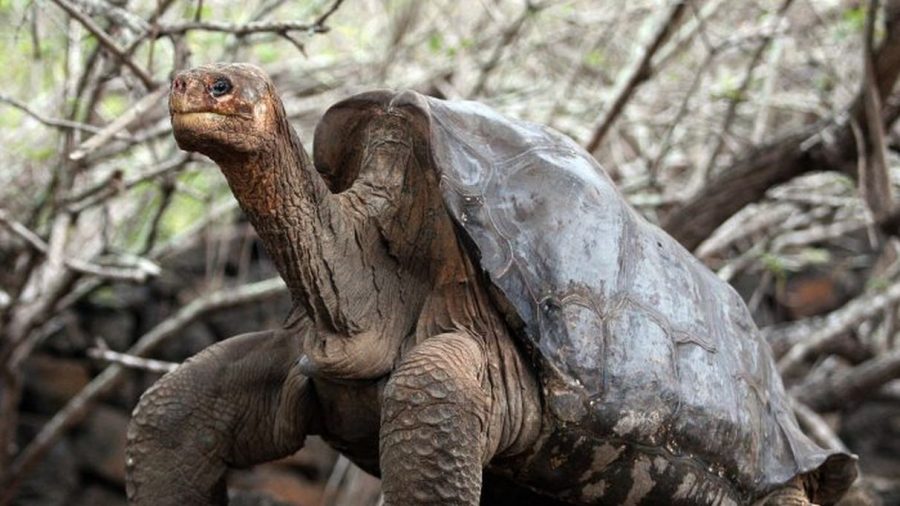A species of tortoise that was long believed to be extinct was discovered on the Galapagos Islands, according to a report.
The Giant Tortoise Restoration Initiative (GTRI) discovered a female Chelonoidis phantasticus, also known as the Fernandina Giant Tortoise, on the island of Fernandina, said Ecuador’s Ministry of the Environment.
The species of tortoise hasn’t been seen in 100 years, which is when it was said to have gone extinct.
The last time a Fernandina Giant Tortoise was seen alive is thought to have been more than 100 years ago.
由 CNN 发布于 2019年2月21日周四
It’s not clear how old the reptile is.
“Having positively identified tortoise scat in the field, the team led by Galante successfully located an active bedding site before finding the animal nearby,” said Animal Planet in a statement. “The tortoise was found sheltering from the equatorial sun, buried deep under a pile of brush.”
Videos and photos of the tortoise were sent to biologists at the Turtle Conservancy, and they identified the female as a member of the species.
“Since only one other specimen of this species has ever been found (a deceased male collected in 1906), we have never seen a female of the species,” said Anders Rhodin of the Turtle Conservancy in the Animal Planet statement. “The photos from the team clearly show a moderately saddle-backed, old female about half to two-thirds the size of the known male. Pending genetic confirmation, this is almost undoubtedly the lost Fernandina Giant Tortoise.”
BREAKING NEWS! GC’s own @wacho_tapia just returned from Fernandina Island in #Galapagos, where they discovered a female #tortoise. Tortoises on Fernandina have been thought to be extinct for over 100 years, so this is a monumental finding! Photos © GNPD, W. Tapia pic.twitter.com/fhQpIzsHmM
— GalapagosConservancy (@SaveGalapagos) February 20, 2019
The tortoise was said to be in mostly good health, albeit underweight. Experts hope the animal might one day be able to breed.
“This facility will ensure her ongoing survival, a healthy diet and perhaps, if sperm retention has occurred, fertile eggs and offspring,” said Animal Planet in the statement. “The hope is that her discovery will prompt new searches and ongoing funding for the location of a suitable mate with the ultimate goal of re-releasing many healthy animals back onto the island.”
In 2012, a tortoise called “Lonesome George,” died, and officials said it was the last of the Pinta island subspecies.
Congrats to the #ExtinctorAlive team and @ForrestGalante for finding a Fernandina tortoise presumed to be extinct since 1906! With her discovery, there’s hope that more species are out there surviving against great odds. ????https://t.co/i824eLFEWb pic.twitter.com/2QkWyIkBIH
— Animal Planet (@AnimalPlanet) February 21, 2019
Scientists tried to get Lonesome George to produce an offspring after it was discovered in 1972, but those efforts were ultimately unsuccessful.
“As a biologist and someone who has dedicated my life to the pursuit of animals believed extinct, this is by far my greatest scientific accomplishment and proudest moment,” said Galante.
“Much like Lonesome George was an icon of extinction, I believe she can become an icon of wildlife hope. She’s the rarest tortoise, if not animal, in the entire world and one of the largest discoveries in the Galapagos in the last century.”
Galante’s expedition to the island and discovery of the tortoise will be shown in an episode of “Extinct or Alive” in the summer.
According to the International Union for Conservation of Nature’s Red List of Threatened Species, the rare tortoise species was believed to have been threatened by lava flows on the island, USA Today reported.
From The Epoch Times


